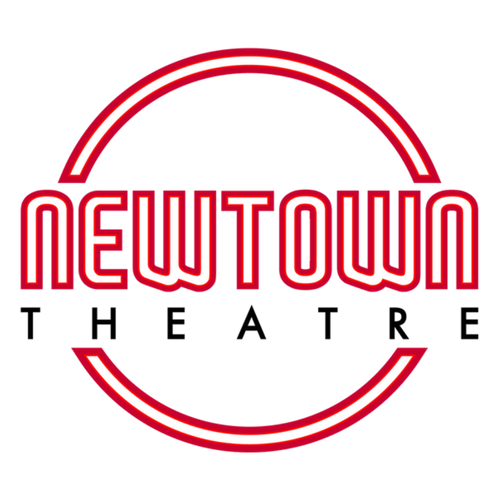For the Obvious Reasons, Plus a Couple of Dubious Ones
Hollywood’s origin is not the glamorous story you may be hoping for. But it is at turns a sordid one, which at least entices our modern palate for darker, morally-ambiguous entertainment.
It should probably come as no surprise that in a place that’s synonymous with bringing dreams to life, all is not what it seems.
A Christian utopia
Four years after arriving in Southern California and buying 160 acres in the foothills west of Los Angeles, Harvey Wilcox officially registered “Hollywood” with the Los Angeles County recorder’s office. It was February 1, 1887.
Wilcox was a real estate mogul from Topeka, Kansas, but he envisioned a place where he could start from scratch and build a utopian community for devout Christians like himself and his wife, Daeida.
As Harvey sold lots, Daeida raised money to build churches, a school and a library. By 1900, nine years after Harvey’s death, about 500 people called Hollywood home, compared with 10,000 in Los Angeles at the time.
It’s not entirely clear how the Wilcoxes arrived at the name Hollywood. The popular theory is that Daeida met a woman on a train with a summer home called Hollywood. But it could just as easily be a reference to a red-berried shrub, known as California holly, that grew in abundance in the area.
Either way, in 1910, 23 years after Harvey and Daeida Wilcox founded their town, it merged with Los Angeles. A year later, the first film studio moved there.
There goes the neighborhood
There’s a funny story about the legendary filmmaker Cecil B. DeMille and his place in the beginning of Hollywood as we know it. He and his crew boarded a train in New York and headed west to shoot The Squaw Man, which was later proclaimed to be the first full-length feature film shot in Los Angeles.
But their sights were set on Flagstaff, Arizona.
“When we got off the train in Flagstaff, it was colder than when I left New York,” DeMille later said. “We looked around and said this doesn’t look like the type of country The Squaw Man was laid in, so we got back on the train and came out to California.”
By 1909, a surging interest in motion pictures was forcing studios to boost their production. Up until that point, New York, New Jersey, and Chicago had served as the centers for early film production, but directors started seeking locations with more reliable weather year-round. Word about Southern California’s abundant sunshine spread fast.
As did its non-union labor. It was the perfect storm. As the studios entered into feature production and built more elaborate and authentic sets, they needed craftspeople in large numbers, everybody from carpenters to dressmakers. The freedom to exploit them was irresistible. DeMille estimated that the skilled laborers on the set of The Squaw Man were paid up to 50 percent less than they would have been on the East Coast.
It’s hard to imagine the irony of the situation was lost on the filmmakers, many of whom, it’s believed, arrived in Hollywood fleeing their own exploitation. Thomas Edison—yes, that Thomas Edison—and his Motion Picture Patents Company, widely known as “The Trust,” held the patents on almost all of the technologies involved in film-making at the time, from the cameras to the projectors. As one account describes it, “if you wanted to be in the movie business, you did so at the pleasure of Thomas Edison.”
And Edison, apparently, ruled with an iron fist. The Trust took to the courts often to prevent unauthorized use of everything and allegedly hired mob-affiliated thugs to make its presence known.
Once California became a viable option, the decision, for many, became clear: Run. Enforcement would be trickier, at least, because Edison was in New Jersey. And California judges were developing a reputation for being less friendly to The Trust’s patents.
Of course, once they were there, California’s other advantages quickly became clear: lots of different geography and architecture within a short drive and land was easy to come by. But all of that was mostly a happy coincidence.
The sign makes it official
The HOLLYWOOD sign is one our most iconic landmarks. Would it soil its image to know that it was originally an advertisement for an upscale real-estate development called Hollywoodland?
Around 1923 (the date is disputed), Los Angeles Times publisher Harry Chandler and his partners spent $21,000 to erect the 45-foot-high white block letters, which were anchored to telephone poles and illuminated by 4,000 light bulbs.
Regular maintenance on the sign stopped when the development went under during the Great Depression. The “H” even fell over at one point, so it briefly read OLLYWOODLAND. Ownership of the sign passed to the city in the mid-forties, and the LA Recreation and Parks Commission apparently pushed to have it razed. But the Hollywood Chamber of Commerce saved it. In 1949, it removed the last four letters and restored the rest.
That sign, however, is not the one that stands today. Again, it fell into disrepair, helped along by some arsonists who set fire to the second “L.”
This time, Hugh Hefner intervened and staged the 1978 equivalent of a Kickstarter campaign, rounding up eight other donors, each of which pledged $28,000 to fund the construction of a new sign that was finished later that year.
That sign is the same size as the original, but it’s supported by steel footings. And if you consider the millions spent since on blowing it up on screen, $250,000 was a bargain.

